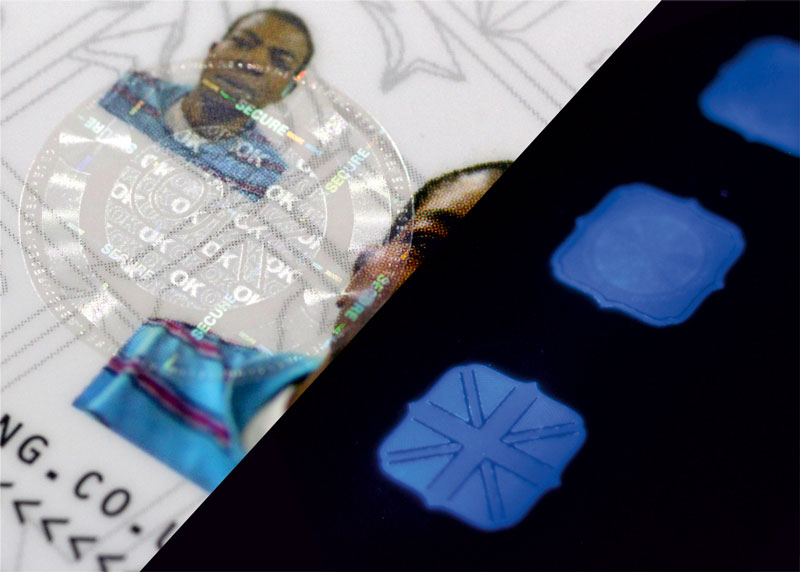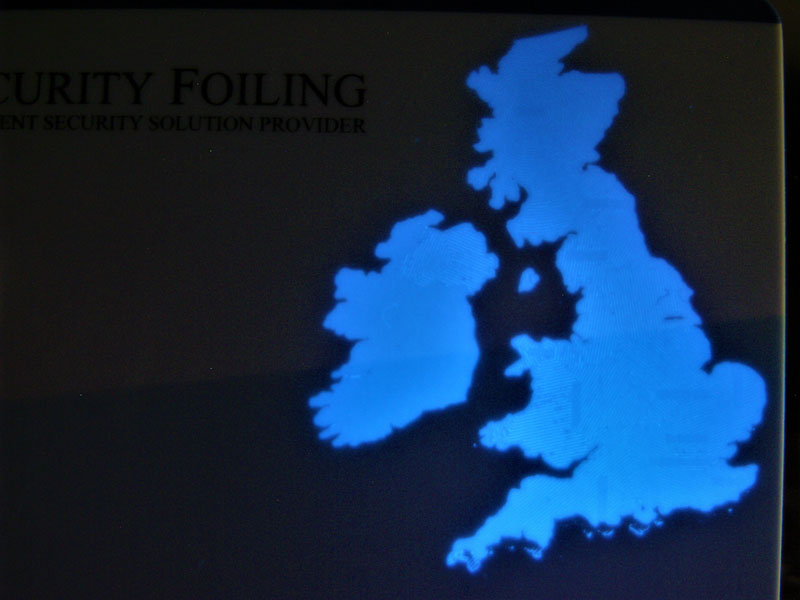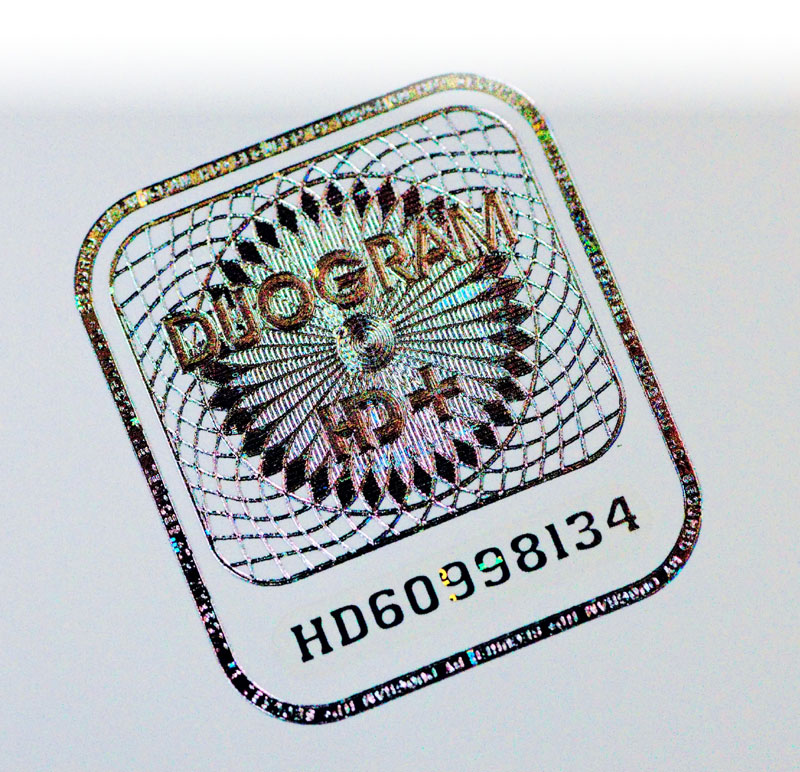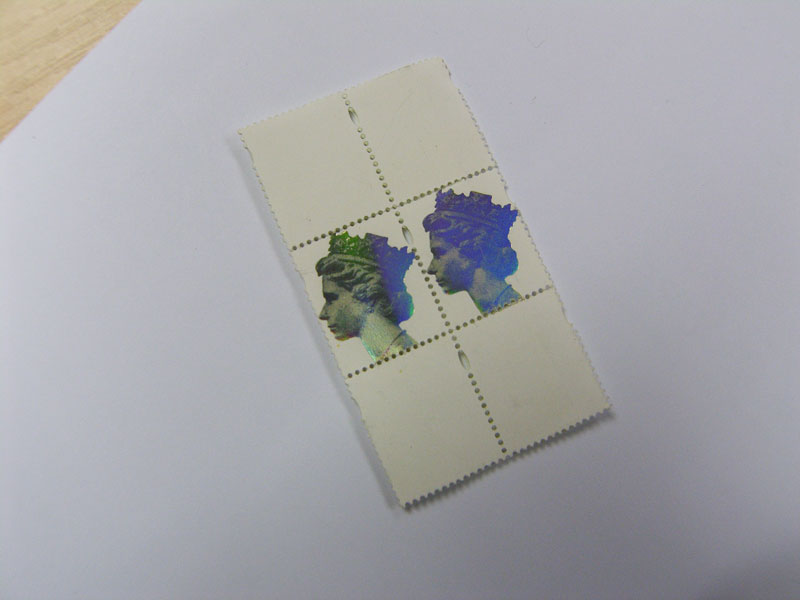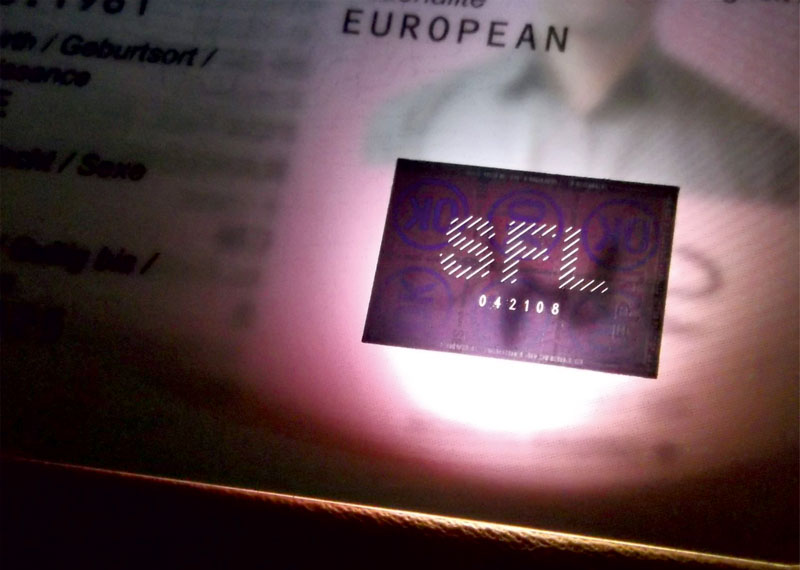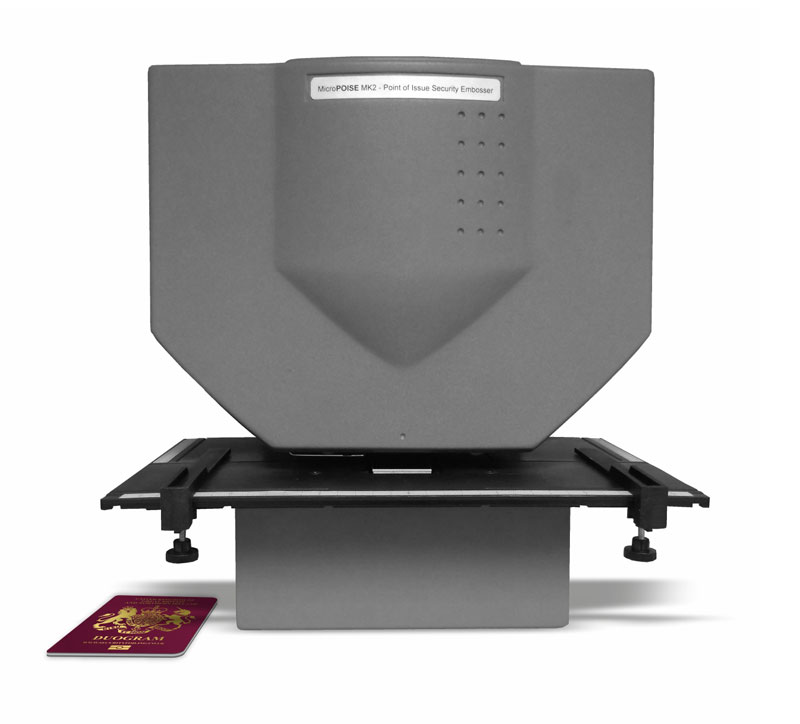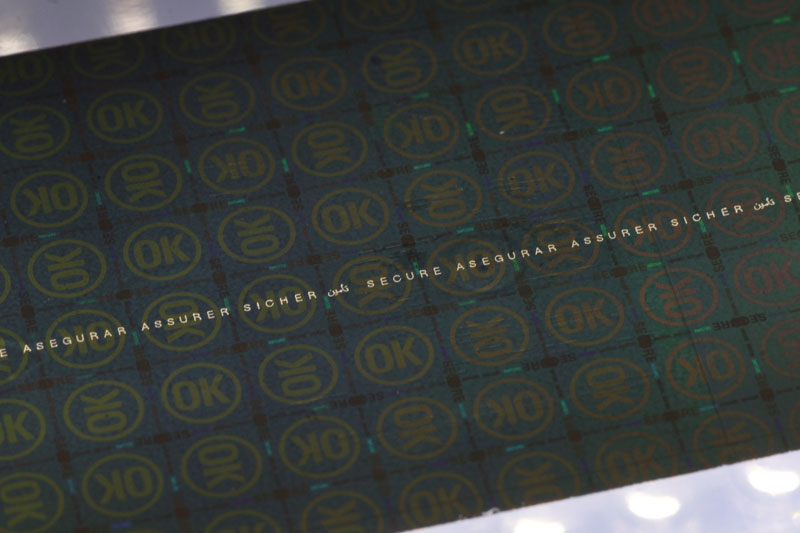
by Mark Filby
Security Foiling Limited
Hot stamping foils have long been used to create stunning visual effects for all types of printed materials, including folding cartons, labels, greeting cards, stationery and much more. And, although foils have been used for many years for security applications, the concerns in the marketplace with counterfeiting of all types of documents have helped spark continued growth in this area.
Let us look at some of the specific applications for hot stamping foils as it relates to security.
Practical applications of hot stamping foil to add security to documents
- Transparent foils – used as a lamination to encapsulate data and photographs to provide evidence of tampering; sometimes incorporating UV reflective properties. (identity documents, university certificates, etc.) See Figure 1.
- Metallic foils – used to protect the substrate against duplication. The high reflectivity and bright shiny finish are much harder to recreate digitally (tax receipts, licenses, work permits, etc.).
- Holographic foils can create dramatic light diffractive features that change color and appearance, which makes accurate copying or simulation very difficult (tax stamps, checks, bank drafts, etc.). See Figure 2.
The stamping process “embeds” the feature into the substrate and can create a tactile effect to the image. Foil can be combined with complex embossing dies to personalize the stamped image (as seen above in Figure 2). Foil also can be used as an additional layer of security – integrated and combined with the document to provide a defense against fraudulent alteration or duplication.
In many instances, the HSF is used as a dramatic visual representation of the customer’s own branding.
Foiled security image – the authentication challenge
Adding any type of security feature to a document should always provoke a discussion about authentication: How do you know the feature is genuine? How can you check? What type of checking is practical for this document?
As with all document security features, hot stamping foils authentication features can have up to three means of authentication.
- Level One – Visual feature, such as color change, that requires no “tools” to check.
- Level Two – Features that require the use of tools, such as microtext magnification, screen reveal slides, hidden features revealed by laser pens, etc. See Figure 3.
- Level Three – Forensic features that require extensive laboratory testing and possible destruction of the document.
The design of the hot stamping foil security feature must recognize the customer’s needs and how they may use the feature in practical terms. Level One features remain the primary method of validating documents, often due to time constraints in checking documents (concert and sporting event ticketing, requiring quick movement of crowds into the venue). Level One features are almost always combined with Level Two and Three features.
Higher level authentication methods may only be used when documents are questioned. This allows more time for that document to be checked more thoroughly (typical in border control applications or government investigation bureaus) in a controlled environment. The hot stamping foil feature will be one part of a more thorough document examination and may act as an early detection device of a document being viewed as suspicious.
Personalizing – adding unique features to hot stamping foil and holograms
Personalization is a feature that can be added to the hot stamping foil before the stamping process. There is technology available today that can add sequential numbers to the holographic image on the foil roll to add traceability of both the hologram before stamping and the documents after they are stamped. Foil is a perfect material for adding additional personalization and can be authenticated at Levels One and Two.
- Sequential numbering – can be recorded during document creation and authenticated later by electronic methods. See Figure 4.
- Halftone images & photographs – strong brand identity. See Figure 5.
- Text threads – a continuous line of text running through the feature. See Figure 6.
- Covert information – revealed by back lighting or UV light. See Figure 7.
These features are more sophisticated and require higher skill levels and equipment to replicate or imitate. They create additional barriers for a counterfeiter.
On-demand document security
Hot stamping foil features can be applied in the centralized format common to most print production facilities or in an on-demand environment with unique, easy-to-use desktop solutions. See Figure 8.
On-demand security is effective in situations that require localized issuing of documents such as tax collection offices, customs authorities, banking, etc. Careful consideration must be given to local support of the document-issuing system to ensure local service levels are maintained.
The on-demand desktop solutions were first developed almost 30 years ago to address an increasing need for government departments to issue their own documents and validate the issuing process with the security feature – an evolution of the rubber stamp or wax seal. On-demand application of holograms and other hot-stamped security features are there to enhance preprinted document security features and provide higher levels of control over the document creation and issuing processes.
The desktop hot stamping unit impresses the hologram or hot foil into the surface of the document and makes removal or change of the feature without detection very difficult – particularly useful for forensic document examination where such fraud attempts would be much easier to detect.
The desktop solution has security access control, and audit trails can be manually or digitally created to record who issues which documents and when. This creates a deterrent for internal fraud and allows document issuing responsibilities to be clearly defined.
There are strong arguments to adopt this approach where security is paramount:
- Fully validated documents are not stored in bulk and open to theft or misuse.
- The security printer does not have to distribute fully validated stock or develop enhanced security in the distribution chain.
- The customer can control the number of valid documents and when they are issued.
- Documents without the security feature are invalid.
- The document creation process can be easily audited (with appropriate controls).
In many applications customers prefer to add some local content to the security document – ensuring that labor is used locally and supports the local economy. On-demand security gives control over the document issuing process and supports local content demands.
In summary, hot stamping foils provide a visually attractive, tactile enhancement and very effective authentication feature when thoughtfully integrated into the document. They can be combined with emerging electronic document technologies: near field communications- (NFC) enabled documents can instruct the user in the correct method of validating the document and hot stamped feature using smartphones and bespoke readers. Holographic foils continue to develop dramatic high-resolution features and color change authentication. The future of hot stamping foil in the security market looks very bright indeed.
Since 1987, Security Foiling Limited (www.securityfoiling.co.uk), based in the United Kingdom, has manufactured the MicroPOISE™ range of hot stamping machines dedicated to the document and plastic card security sector. It has more than 2,500 installations across 105 countries. Its resellers and technical partners offer hot stamping and embossing document security solutions with full design and technical support services. Together it champions the use of hot stamping foil and holograms to defeat the counterfeiter and fraudster and put the document issuer in control.


